Flycatchers are a group of birds frequently overlooked on Bonaire. Sometimes this is because they resemble more common birds, but often it’s because they lead hidden lives in the many trees and bushes of the island. Because we love hidden gems, we are putting these busy little birds in the spotlight. Welcome to the hidden world of the flycatchers of Bonaire!
Do you also love hidden gems? On our tours, including our birdwatching tours, we’re excited to take you to the beauty and tranquility of Bonaire’s remote spots.
Onderwerpen
- 1 What are Flycatchers?
- 2 The Gray Kingbird (Tyrannus dominicensis)
- 3 The Brown-crested Flycatcher (Myiarchus tyrannulus)
- 4 The Northern Scrub-Flycatcher (Sublegatus arenarum)
- 5 The Caribbean Elaenia (Elaenia martinica)
- 6 Distinguish the Flycatchers of Bonaire
- 7 The White-tailed Nightjar (Hydropsalis cayennensis)
- 8 On a Birdwatching Tour with HopiBonaire
- 9 Read More
Text continues below…

What are Flycatchers?
Flycatchers are small to medium-sized songbirds belonging to the family Tyrannidae. Although they are found only in North and South America, flycatchers are the largest bird family in the world, with a whopping 400 species! Four species of flycatchers are commonly found on Bonaire, but occasionally, another species will “blow in” onto the island.
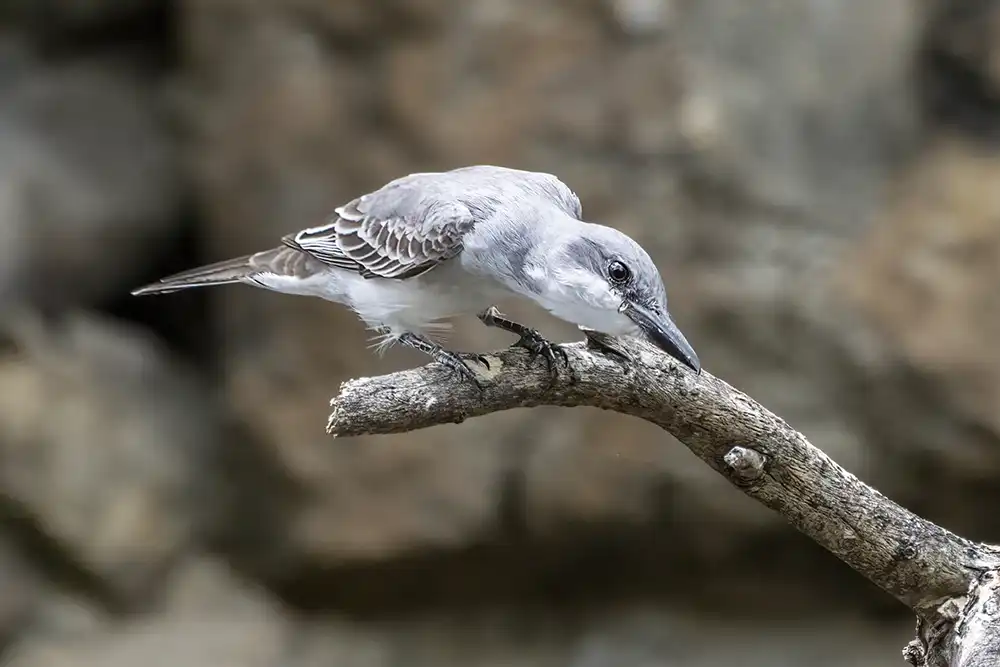
As their name suggests, flycatchers primarily eat flying insects, such as bees, wasps, and dragonflies. These birds are known for their agility in catching their prey in mid-air. They can be recognized by their “bristles” around the beak and eyes. These specialized feathers help the bird sense where its prey is, allowing it to snatch insects out of the air with great precision. The bristles also prevent flies from accidentally hitting the bird’s eyes, which is crucial for a flycatcher’s survival!
The Gray Kingbird (Tyrannus dominicensis)
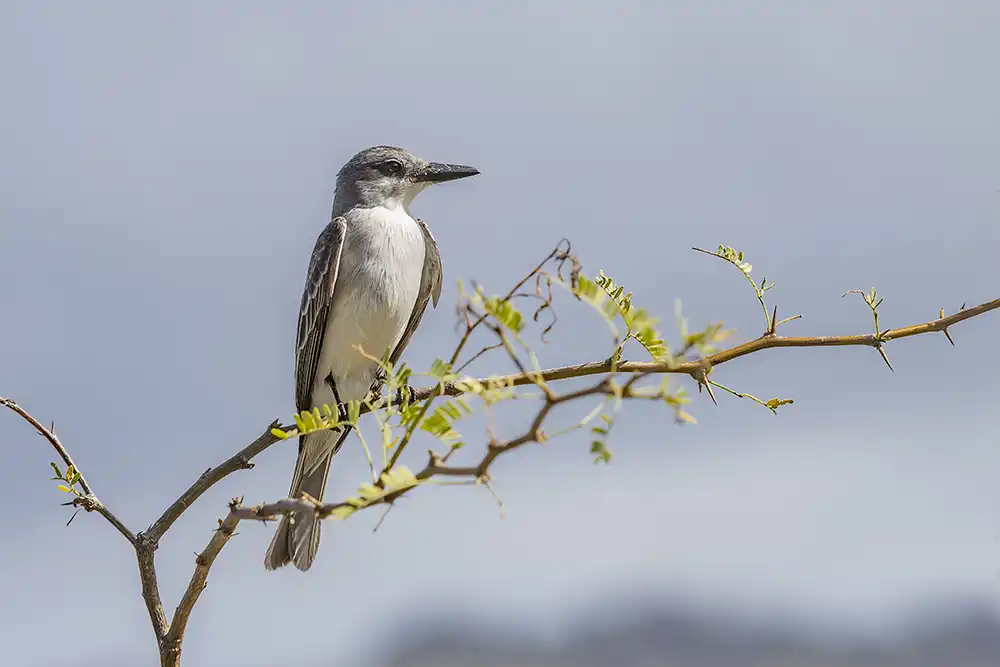
Let’s start with Bonaire’s largest flycatcher, the Gray Kingbird (Pímpiri in Papiamentu). The Kingbird is a gray bird with a white belly, which unfortunately makes it look quite similar to the Caribbean Mockingbird, the most common bird on Bonaire. As a result, the kingbird is often completely overlooked by most people. If you see a gray and white bird perched majestically, take a closer look at its head. If the bird has a dark gray head and a large beak, you’ve spotted a Gray Kingbird. Hopefully, you’ll see it in action soon!
Kingbirds are very territorial. You will often see them chasing each other while calling loudly. They have a shrill, rolling call: “Pipirie, pipirie!” This is why they are locally known as pímpiri. They also chase away other birds, even caracaras!
The Brown-crested Flycatcher (Myiarchus tyrannulus)

The Brown-crested Flycatcher (Tirano grandi in Papiamentu) is a beautiful brown bird with a gray neck and a yellow belly. Although it is the same size as the Gray Kingbird, the Brown-crested Flycatcher is significantly more slender. This build, combined with the beautiful chestnut and lemon-yellow plumage, makes this flycatcher one of the most graceful birds on Bonaire. Unfortunately, the Brown-crested Flycatcher leads a hidden life in trees and shrubs. Only when the vegetation becomes sparser during the dry season can they be more frequently admired.
Like the other flycatchers on Bonaire, the diet of the Brown-crested Flycatcher consists mainly of flying insects. Occasionally, they eat some fruit. From the back, the Brown-crested Flycatcher somewhat resembles the Pearly-eyed Thrasher, a brown-gray Garden bird of Bonaire. However, the Pearly-eyed Thrasher lacks the yellow belly and is also much stockier. The flycatcher, on the other hand, lacks the beautiful pearly white eye.
The Northern Scrub-Flycatcher (Sublegatus arenarum)
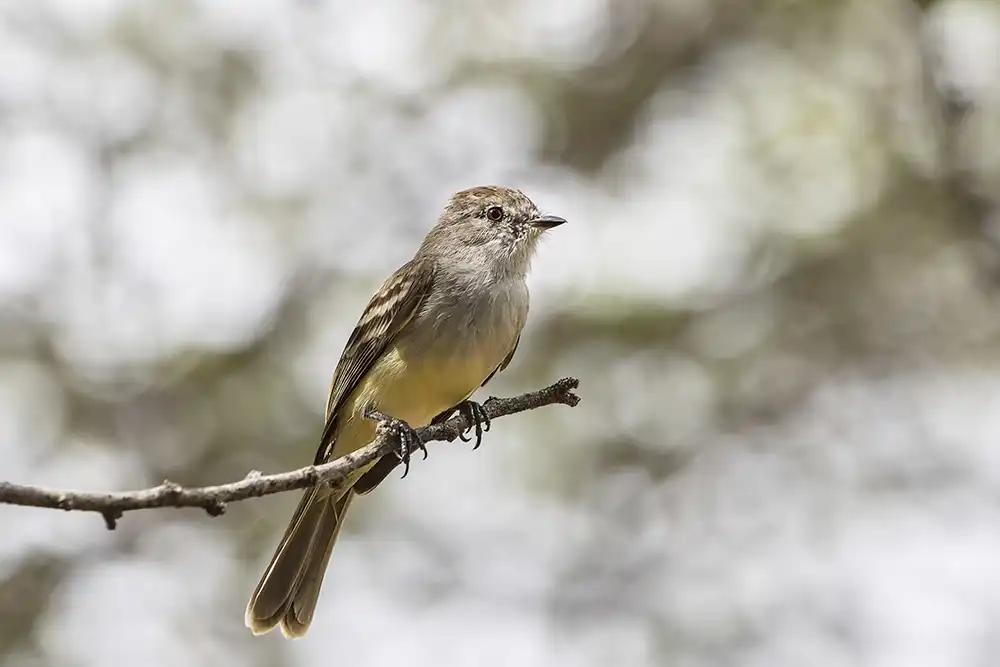
The Northern Scrub Flycatcher (Para bobo in Papiamentu) is also a brown-gray bird with a yellow belly. You can most easily distinguish it from the Brown-crested Flycatcher by looking at its beak. The beak is much less prominent. Additionally, the Scrub Flycatcher is about a third smaller and has a rounder shape.
This flycatcher also leads a mostly hidden life on Bonaire. It finds its prey mainly out of sight, in dense shrubs and tree canopies. When Hiking on Bonaire, you have the best chance to spot a Northern Scrub Flycatcher, as they are not shy at all.
The Caribbean Elaenia (Elaenia martinica)
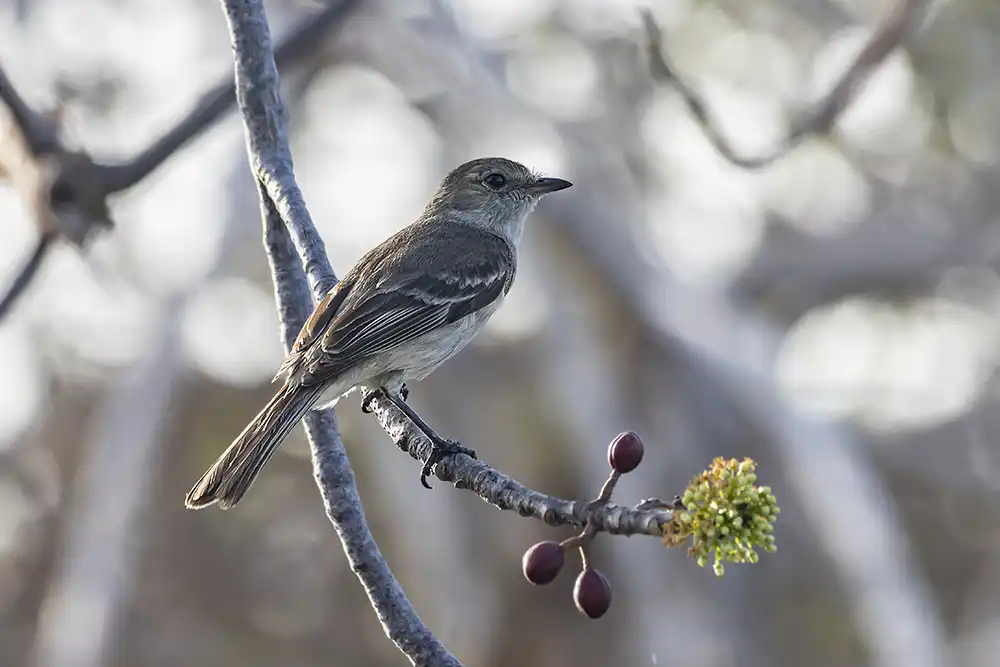
Is the belly white, or is it yellowish? If you’re asking yourself that question, you’re probably looking at a Caribbean Elaenia (Elenia Caribe in Papiamentu). The belly of this bird is pale yellow to almost white. The Caribbean Elaenia is the same size as the Scrub Flycatcher. Besides the color difference, you can also recognize it by its slightly larger beak, which is pink at the base.
This flycatcher is commonly found on Bonaire. On Curaçao, it is much less common, and on Aruba, it is rarely seen!
Distinguish the Flycatchers of Bonaire
To make distinguishing the flycatchers of Bonaire easier, we have listed the main similarities and differences below.

The White-tailed Nightjar (Hydropsalis cayennensis)
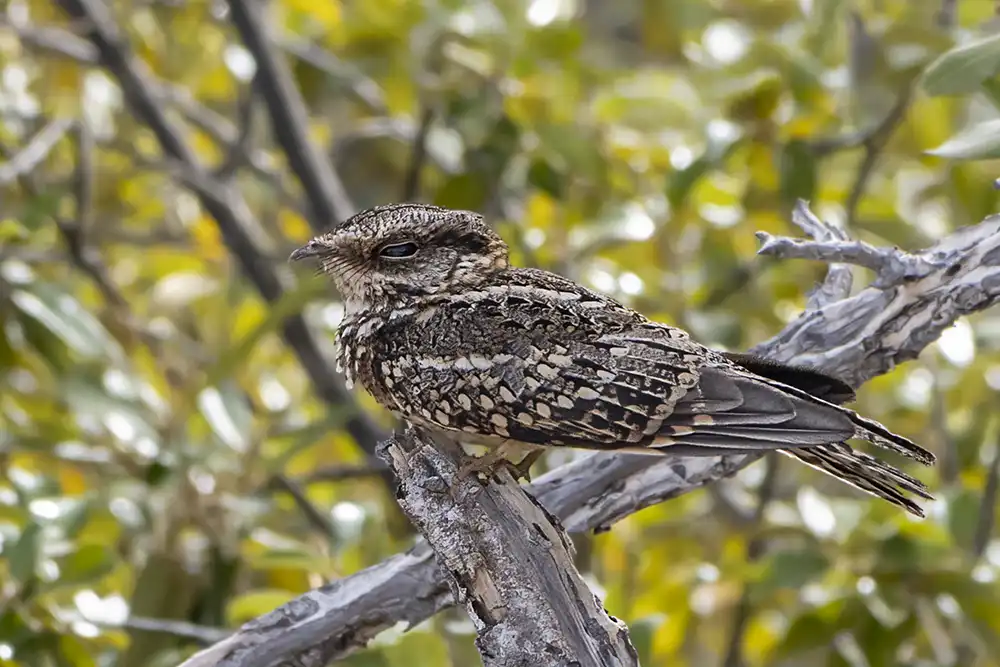
We conclude with a special flycatcher that doesn’t belong to the family: the White-tailed Nightjar (Tapa Kaminda in Papiamentu). As the name suggests, this bird is mainly seen at night. At dusk and dawn, they hunt flying insects like moths, which stand out sharply against the night sky. Nightjars take full advantage of this, equipped with relatively large eyes that aid in their hunting.
To enhance their vision, their retinas reflect incoming light. Like cats, their eyes seem to glow when illuminated. On Bonaire, nightjars are especially known as the birds with red glowing eyes that you can see along the road at night. The headlights of cars reflect in their eyes, and nightjars use the beams of passing cars for hunting. For the same reason, they are frequently spotted under streetlights.
Want to get a closer look at the nightjar? Go on a nightjar safari in the evening. Scan the road ahead for glowing red dots and slow down when you spot one. The slower you approach, the closer you’ll get before the bird flies away. Good luck!
On a Birdwatching Tour with HopiBonaire
Most birds of Bonaire are easy to spot, but during a Birdwatching Tour, you see even more! This way, you can enjoy species that lead hidden lives, like the flycatchers. Your guide will also point out species that are often overlooked, such as black-faced grassquits and hummingbirds. Plan your bird tour at the beginning of your vacation. Then you can enjoy the birds that others miss throughout your holiday!
The bird tours of HopiBonaire are entirely tailored to you and your group. We’d love to hear your wishes and will get back to you with a customized bird tour. During our tours, we explore the entire island, including the unpaved roads. The most beautiful bird areas of Bonaire are found there. Along the way, our enthusiastic guide will also happily share everything about the Nature in Bonaire. Visit our Birdwatching Tour page or browse through our Other Tours, and we’ll make it an unforgettable trip!
Text continues below…

Read More
You must also be curious about our other blogs, where we introduce you to the birds of Bonaire. Here are our other bird blogs: – Birds on Bonaire: The Big Five – Birds on Bonaire: The Small Five – Colorful Birds on Bonaire – Garden Birds on Bonaire – Herons on Bonaire – Water Birds on Bonaire – Photoblog: The Flamingos of Bonaire – Photoblog: The Hummingbirds of Bonaire When Hiking on Bonaire, you truly enjoy the most of all the birds! We have also written blogs about Lizards, Sea Turtles, Butterflies and the Wild Mammals of Bonaire. On our comprehensive Blog Page you will find many other informative blogs about Bonaire. |

